Dyeing your clothes can sound difficult, messy, and downright scary. But guess what? It’s none of those things! After all, I’m the girl who dyed her wedding dress so I could wear it again. Trust me, anyone can dye clothes at home because it’s easy, straightforward, and crazy affordable. And it’s a great way to make things you just aren’t wearing a lot more wearable instead of just giving up on them. Or giving them closet space but never reaching for them because the color just isn’t your favorite.
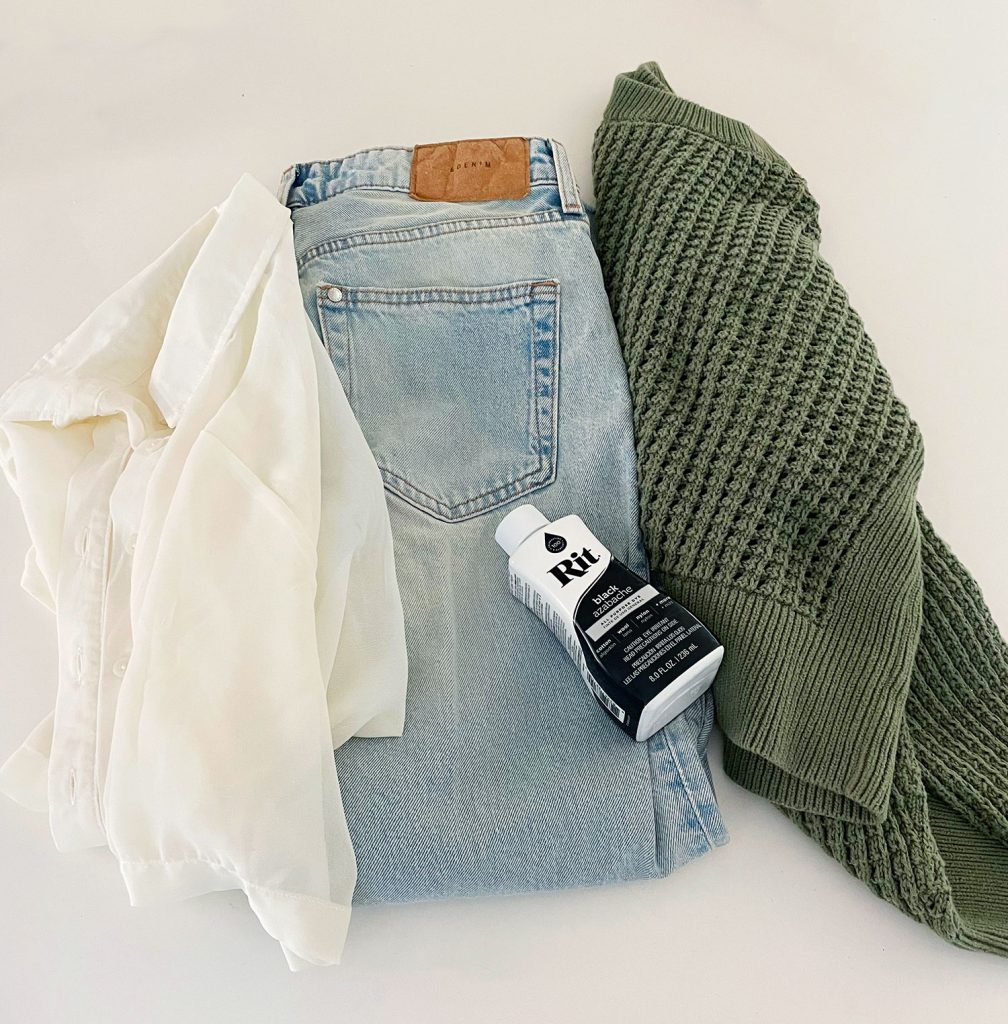

Dyeing fabrics is great way to customize, alter, or reinvigorate your clothes with a new hue. I wasn’t really wearing this shirt, jeans, or sweater much, so I was on the verge of getting rid of them. The white shirt and jeans had a weirdly yellowed tint that made them look a little dirty – and the green sweater was old & faded. Then I realized I could dye them my favorite color (duh… black!) and they’d be easier to incorporate into my wardrobe. So in the end, I got 3 “new” pieces of clothing from one $4 bottle of dye!
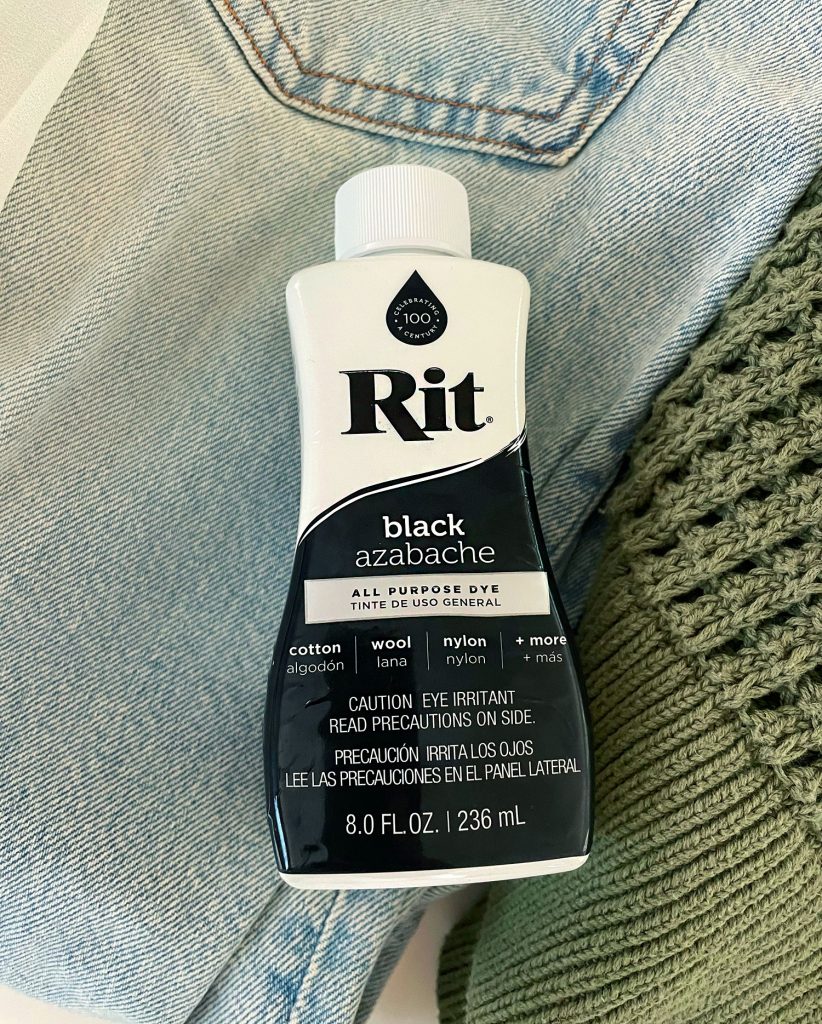

Note: This post isn’t sponsored by Rit. It’s just a dye that’s extremely easy to find (they even have it in our grocery store!). We’ve used other brands with equal success in the past.
My Best Clothes Dyeing Advice
The #1 thing I tell people worried about dyeing their clothes is to stay open-minded about the result. Achieving a precise color is difficult, even for professionals. That’s because MANY factors influence the outcome: the fabric blend, the item’s original color, your dye concentration, the time soaking, etc. So this process is more about moving clothes towards a color (darker, greener, pinker, etc) than hitting an exact color target. For example, black dye turned my button-down and jeans below darker and closer to black, but neither one is a true deep black. The good news is I also love gray and it eliminated the yellow tint they both had. So ultimately I like the result a lot more than before!


Personally, I think that’s part of the fun of this DIY project. You never know exactly how things are going to turn out! And with these clothes (and with my wedding dress) any outcome would be an improvement over the current versions that weren’t getting worn.
Supplies Needed To Dye Clothes
Here are the materials you should gather before dyeing fabrics. We like to use the “bucket method” (it can also be done in a sink or tub). If you are dyeing larger items like bedding or curtains, you can also use your washing machine.


- 1 bottle of Rit All-Purpose Liquid Dye
- 5-gallon bucket (we found it helpful to have 2)
- Boiling water
- 1 cup of salt (for fabrics with cotton, rayon, ramie, or linen)
- 1 cup of white vinegar (for fabrics with nylon, silk, or wool)
- 1 teaspoon of mild dish soap
- Large stick or spoon to stir with
- Rubber gloves
- Hose or shower sprayer to rinse
- Washing machine
We chose to work outside so we didn’t have to worry about spills or splashes. If you are working inside, it’s best to protect your work area with a dropcloth, plastic tablecloth, or towels. The dye doesn’t tend to stain if wiped up quickly, but it’s always best to cover your work surface just in case.
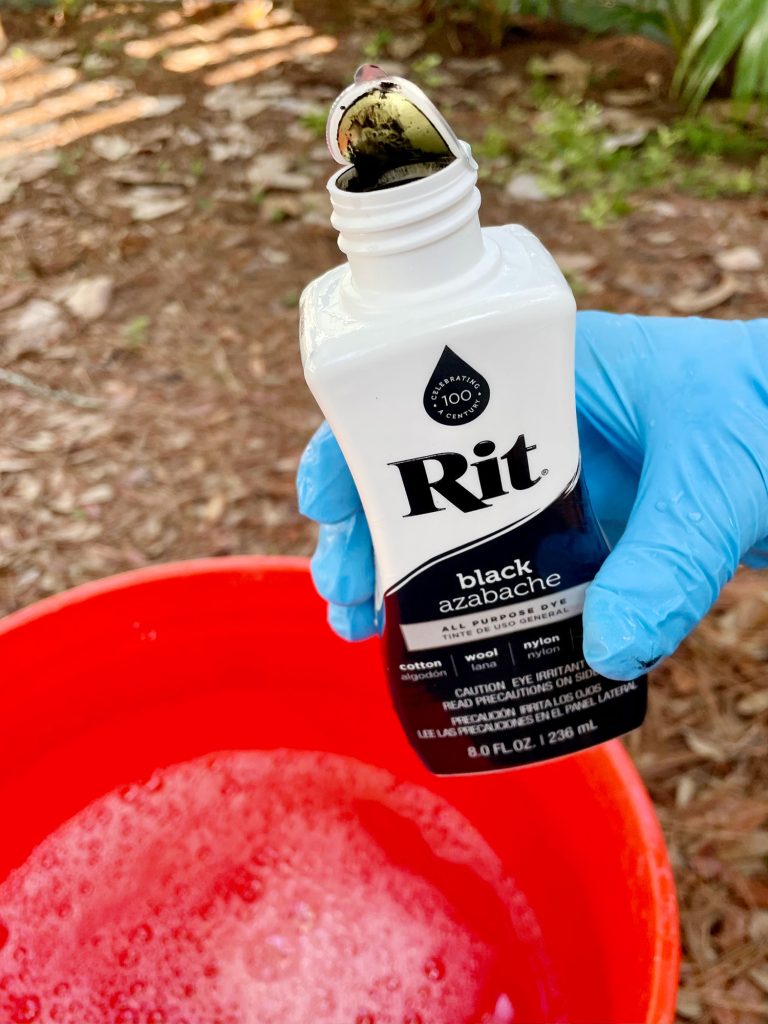

Rubber gloves are also recommended to prevent potential skin discoloration from the dye.
What Fabrics Can I Dye?
Rit All-Purpose Dye is great on a wide range of fabrics, especially natural fibers like cotton, wool, linen, ramie, and silk. It also works on synthetics like nylon and rayon. For fabrics containing more than 35% polyester, acrylic, or acetate, Rit recommends their Synthetic Fabrics Dye. You cannot use the bucket method with that dye (it must be done on a stovetop). So check your clothing tags before beginning to ensure you’re using the correct product and method.
Step-by-Step Instructions
The whole process took about an hour (minus washing time in the washer), so grab your supplies, cover your work area, and let’s get started. Here’s an overview of the steps.
- Pre-Wash Your Clothes
- Prepare The Dye Solution
- Add Clothing
- Stir
- Rinse Thoroughly
- Wash Again
1. Pre-Wash Your Clothes
Fabrics must be clean and free of stains before dyeing. Send everything through the washing machine before you begin, and treat any stains. Don’t use fabric softener, since that can interfere with dye absorption.


The fabric also needs to remain wet, so skip the dryer. If your clothes are already dry, soak them before beginning. This is where our 2nd bucket came in handy!
2. Prepare The Dye Bath
Mix your solution in a container big enough for your clothes to move freely. This can be a sink, bathtub, bucket, or bowl. We chose to work outside this time, but we sometimes put a bucket or bowl in the sink or bathtub.


To prepare your dye solution:
Start with hot water
Rit recommends 3 gallons for every 1 pound of fabric. Water should be hot, ideally a minimum of 140º. We used a mix of hot tap water and 2 pots of boiling water. We used a kitchen thermometer to check, but precision isn’t necessary. Leave room for your fabrics to be added, so don’t overfill the container.
Add salt or vinegar
Use a measuring cup to add 1 cup of table salt (for cotton, rayon, ramie, or linen) and/or 1 cup of vinegar (for nylon, silk, or wool). These will help enhance the color.
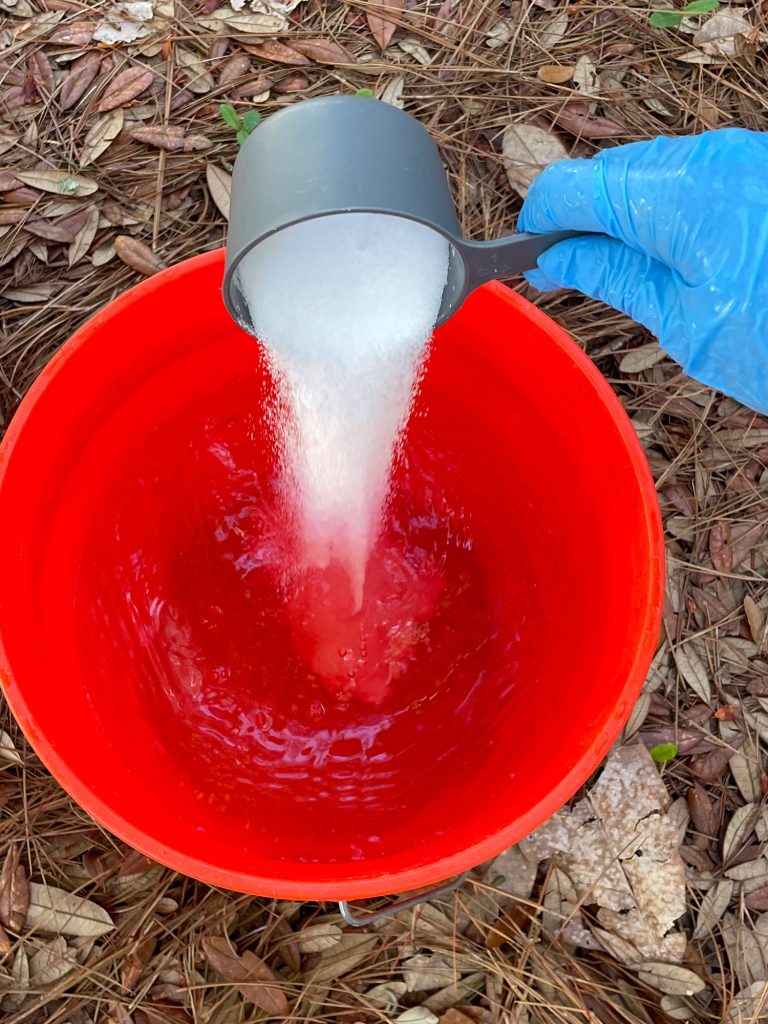

Add dish soap
Next, add 1 tsp of mild dish soap to your solution. This will promote even dyeing across your fabric.
Add liquid dye
Now, add your Rit Dye to the water. Rit recommends 1/2 bottle for every 1 lb of fabric. However, more can be added to achieve a bolder or more saturated color. We used a whole bottle. Mix your ingredients well.
Note: Rit also sells concentrated powder dye. It’s only a dollar cheaper ($2.50 vs $3.50) but only goes half as far as the liquid, so we usually opt for the easier, pre-mixed liquid version.
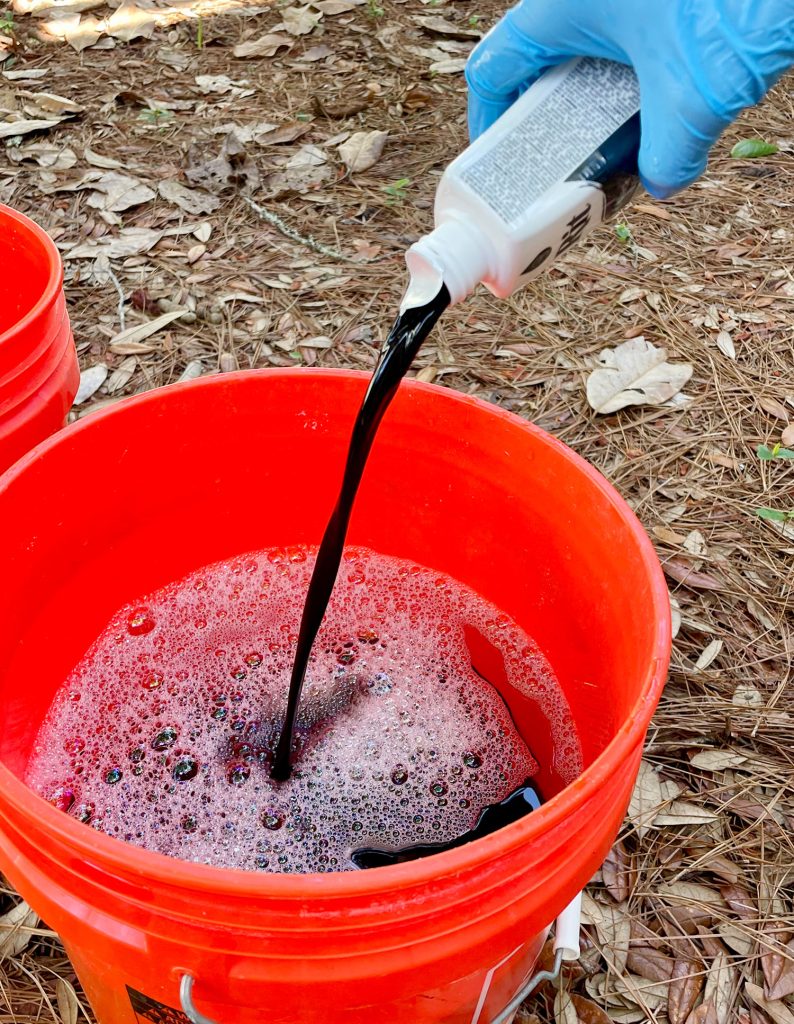

If you’d like, you can test your color by dipping a paper towel into the mix. This is not precise, but it is a quick way to see if you need to add more dye or dilute with more water. This is helpful if you’ve combined multiple dye colors to make a custom color.
3. Add Clothing
Wring out your clothes by hand so they are wet, but not dripping. Add fabrics to the dye bath and use your stir stick to ensure they are fully submerged. We dyed all 3 pieces of clothing together.


4. Stir, Stir, Stir
Slow and continuous stirring helps achieve an even and consistent color across your fabric. At a minimum, stir continuously for the first 10 minutes. You can continue this process for up to an hour. Some fabrics (like nylon) need less time, while others (polyester) need more. We did this batch for 30 minutes, stirring slowly and continuously the entire time.


John did this part while I photographed the process and brought various things to him as needed (it’s nice to have an extra set of hands but very possible to do this solo too – I’ve done it fully alone before). To stay entertained by the waiting-and-stirring stage this time, John watched Survivor on his phone while I picked up one of our kids after school. The point I’m making here is that this project isn’t very rigorous. It’s generally pretty fun. If you’d like, you can periodically check the color during this waiting period. Just remember that wet fabrics appear darker.
5. Rinse Thoroughly
Prepare a place to rinse your clothing before removing it from the dye bath. We used our spare bucket outside to get most of the dye out and then moved inside to the bathtub for a more careful rinse. But first, we wrung out each clothing item over the bath.
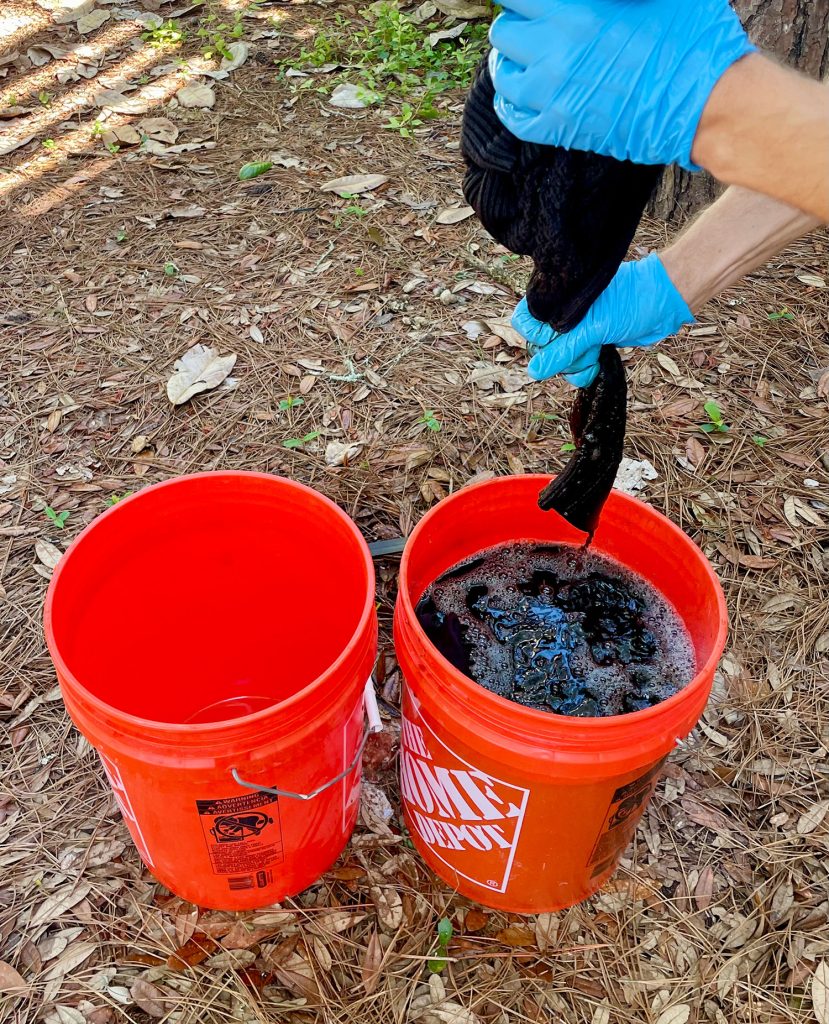

Then we used our garden hose to spray off most of the excess dye. You can already see how different fabrics reacted to the same dye solution!
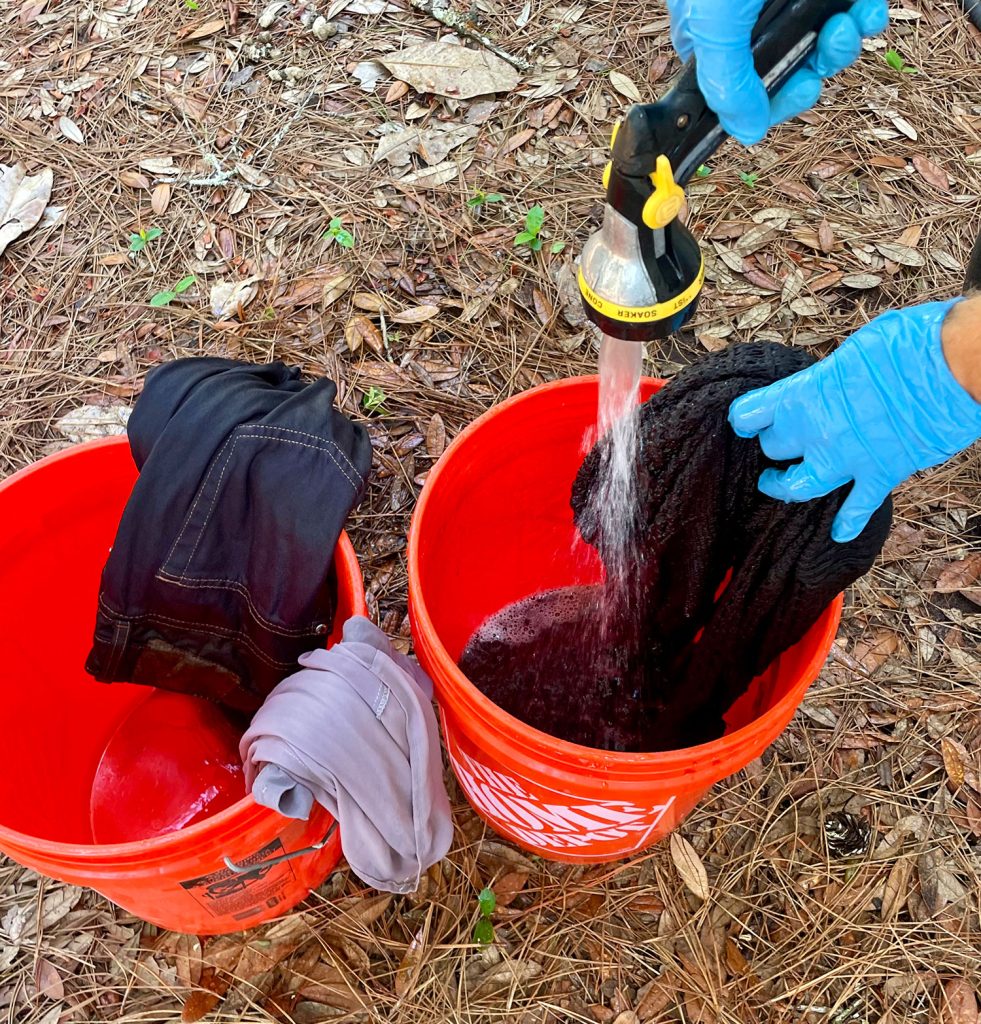

Ultimately you want to rinse your fabric until the water runs clear from the fabric. This takes time! We probably spent 15 more minutes inside rinsing with our shower sprayer. Use cool water for this step.
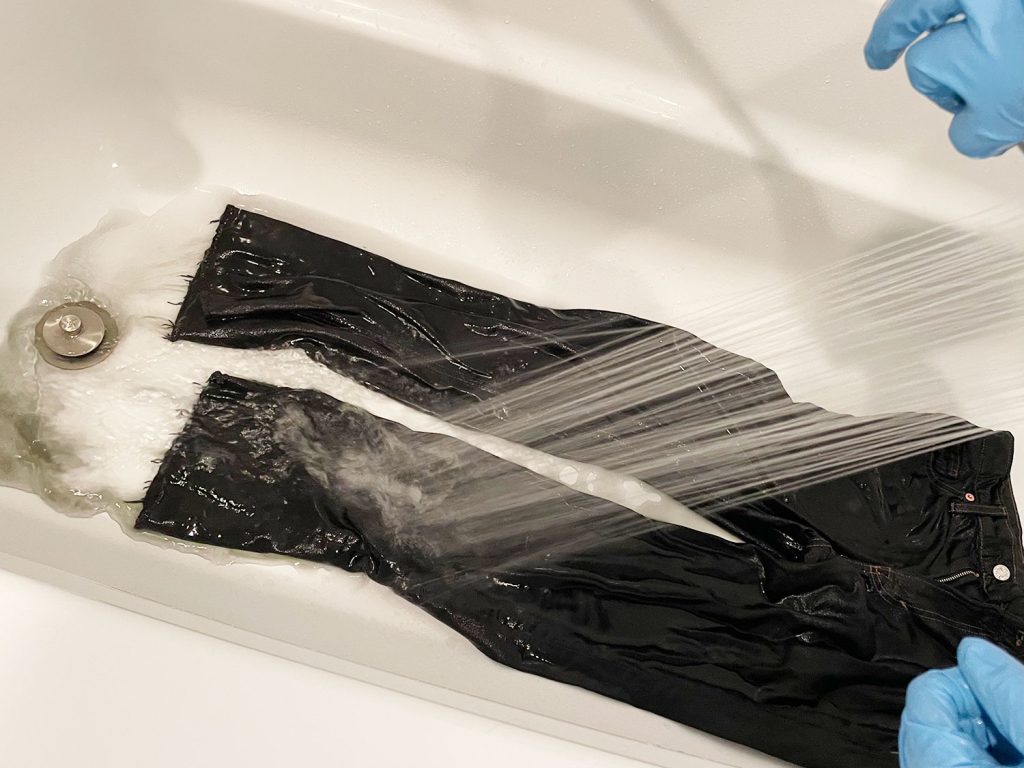

It’s not necessary to rinse in two locations. The white bathtub just made it easier to see if the water was clear.
6. Wash Again
Finally, wash all items in your washing machine again with warm water and mild detergent. Throw in an old towel with your clothes to act as a “color catcher.” This process removes the remaining dye and help to set the color. Dry as normal in your dryer. We typically repeat this process twice just to be safe. If your washing machine has an “extra rinse” setting, it doesn’t hurt to do that too. This will just help eliminate dye running during future, regular washings. Note: don’t skip the color catcher towel. Ours catches SO MUCH COLOR.
The Final Result
Like I said up front, part of the fun of dyeing your clothes is seeing the final result. These 3 pieces turned out everything from a light gray to deep charcoal (I wouldn’t call any of them a “true black” color). But this definitely achieved my goal of making them a lot more wearable for me.
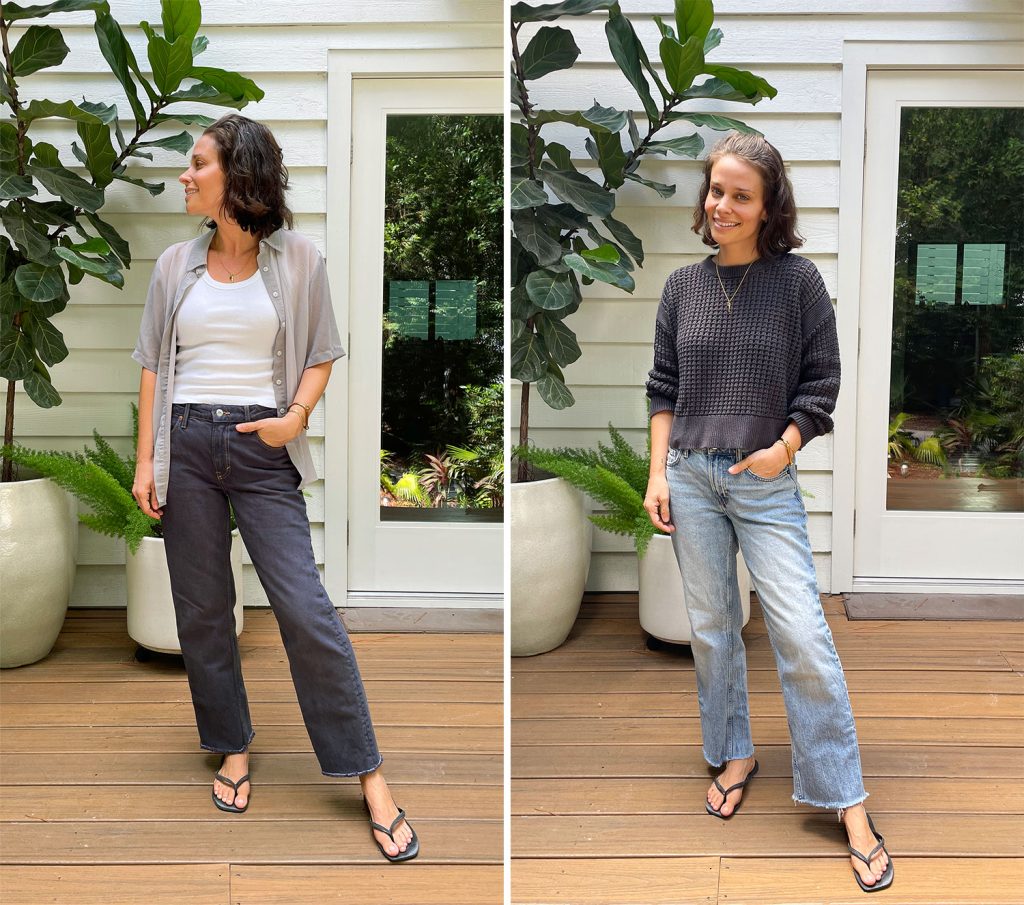

More Clothing & Fabric Projects
Here are some other projects using fabric, dye, or optimizing my wardrobe.


*This post contains affiliate links, so we may earn a small commission when you make a purchase through links on our site at no additional cost to you.



